Cyprus is one of the few places in the Mediterranean where the swimming season lasts almost all year round. Thanks to its mild climate and abundant sunny days, the island remains an attractive beach holiday destination from spring to late autumn. Even in winter, the sea here remains relatively warm, making swimming possible for those seeking cooler weather and wellness treatments.
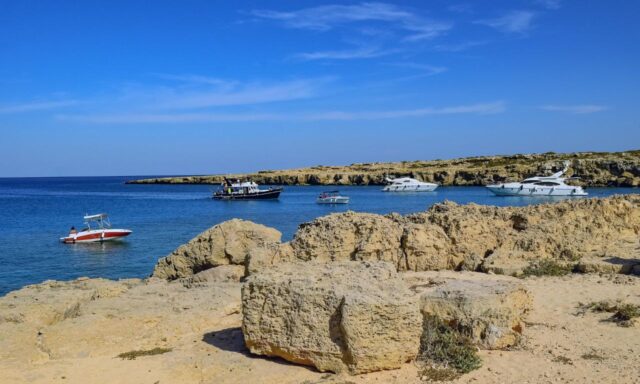
Contents
- 1 Climate and water temperature characteristics
- 2 The beginning of the swimming season
- 3 Summer season
- 4 Autumn is the “velvet season”
- 5 Winter swimming in Cyprus
- 6 Peculiarities of different regions
- 7 Tips for a comfortable bath
- 8 The best beaches for swimming
- 9 When the sea is warmest
- 10 Swimming and the wind
Climate and water temperature characteristics
Cyprus is located in the eastern Mediterranean and has a subtropical climate with mild winters and hot, dry summers. Average temperatures in coastal areas are:
- in spring – from +22 to +28 °C,
- in summer – from +30 to +38 °C,
- in autumn – from +25 to +33 °C,
- in winter – from +16 to +20 °C.
The sea temperature changes smoothly throughout the year:
- in April – about +19 °C,
- in May — +21…+23 °C,
- in June — +25…+27 °C,
- in July–August — +28…+30 °C,
- in September – +27 °C,
- in October – +25 °C,
- in November – +22 °C,
- in January–February — +17…+18 °C.
Due to the absence of strong winds and deep currents, the water off the coast of Cyprus warms up quickly and remains comfortable for swimming for a long time.
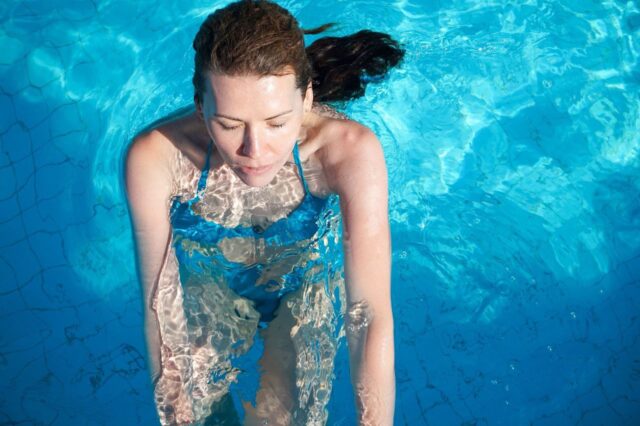
The beginning of the swimming season
The first swimmers appear as early as April, especially in the southeast of the island—in the areas of Ayia Napa and Protaras. The water is still cool, but clear and refreshing. This period is preferred by those who appreciate peace and quiet and the absence of crowds.
In May, the sea becomes truly comfortable—the water temperature reaches 23°C, and the air is warm but not sweltering. This is the ideal month for a family vacation: the sun is already strong but not overheating, and the beaches are clean and uncrowded.
Summer season
From June to September, the sea off the coast of Cyprus turns into a warm lagoon. Water temperatures remain consistently between 26 and 29°C, and in the bays of Ayia Napa, Larnaca, and Paphos, they can reach 30°C.
Summer is the time of greatest beach comfort, but also the peak tourist season. Morning and evening swimming are especially pleasant: the water retains its warmth, and the sun gently reflects off the turquoise waves.
Throughout the summer, the island enjoys gentle sea breezes, mitigating the heat. The water remains clear and the waves are small, making conditions safe even for novice swimmers.
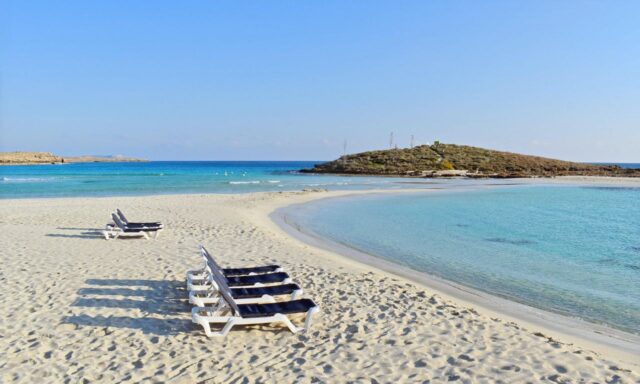
Autumn is the “velvet season”
From September to the end of November, Cyprus enjoys the ideal swimming season. The autumn sea remains warm, but the sun no longer scorches, and the air becomes mild and fresh.
- In September, the water temperature is around +27 °C – it feels like early August.
- In October the sea cools down to +25 °C, but you can swim all day.
- In November, the water is still warm – around +22 °C, although the morning and evening hours become cooler.
Autumn is considered the best time for swimming, snorkeling and diving: underwater visibility is excellent, and the weather is stable and windless.

Winter swimming in Cyprus
Winter on the island is mild, with plenty of sunny days. From December to March, the average water temperature is 17–18°C, and the air temperature is around 18°C. While this is chilly for most tourists, winter swimming is a regular occurrence for seasoned swimmers and locals.
Even in winter, you can find swimmers practicing their wellness routines on the beaches of Limassol, Larnaca, and Paphos. Morning swims on sunny days are especially popular, when the water feels invigorating but not icy.
At this time of year, the beaches are deserted, the waves are stronger, and the sea is darker and deeper in color—perfect for secluded relaxation and walks along the coast.
Peculiarities of different regions
Water temperatures and season length vary slightly depending on the region:
- Ayia Napa and Protaras are the warmest resorts. Their shallow bays warm up quickly, and the swimming season lasts from April to November.
- Larnaca has a comfortable sea with a gradual entry and a long season. Swimming is possible from April to the end of October, and sometimes even into November.
- Limassol – the sea is a little deeper and cooler, but the beaches are well-maintained, the water is clean, the season is from May to October.
- Paphos has a rocky coastline with swells, but the water temperature is consistently high, making it suitable for swimming almost all year round.
- Polis and Akamas are wilder areas with crystal-clear water and natural bays. The season here is shorter— from May to September —but the water is perfectly clear.
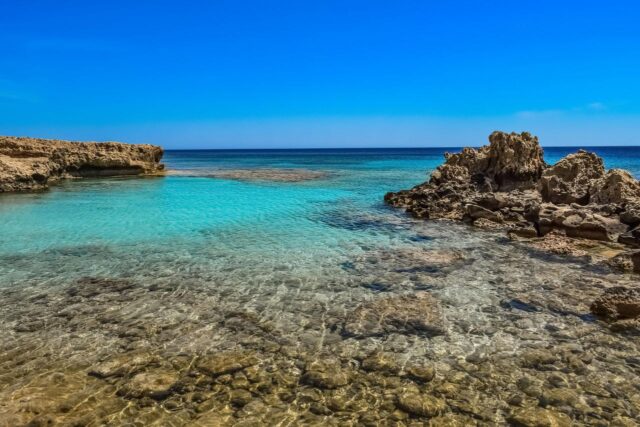
Tips for a comfortable bath
- Choose the morning hours. The water is already warm, the sun is mild, and the beaches are not yet crowded.
- Watch for safety flags. Established beaches display flags warning of waves or currents.
- Use sun protection Even in May and September, ultraviolet radiation remains strong.
- For children, it’s best to choose bays. Shallow bottoms, calm waters, and calm winds are ideal conditions.
- In winter, it’s best to swim at midday. By this time, the sun has warmed the air and water to its maximum.
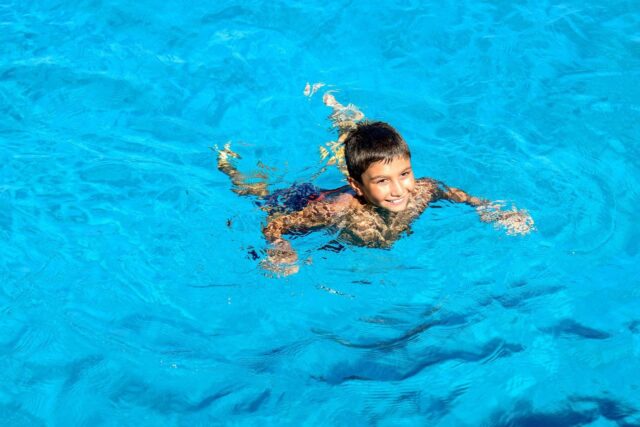
The best beaches for swimming
Cyprus is famous for its clean and well-maintained beaches, many of which have been awarded the Blue Flag for their environmental friendliness and water quality.
- Nissi Beach (Ayia Napa) – shallow, warm water and white sand.
- Fig Tree Bay (Protaras) – crystal clear sea and easy access.
- Governor’s Beach (between Limassol and Larnaca) – a combination of white rocks and dark sand, calm waters.
- Coral Bay (Paphos) is a sandy bay with a soft bottom and a gentle slope.
- Mackenzie Beach (Larnaca) is a city promenade with clear water and well-developed infrastructure.
When the sea is warmest
Peak water temperatures occur in July, August, and the first half of September, when the sea warms up to 29–30°C. Even at night, it remains warm, making swimming possible around the clock.
The most comfortable combination of air and water temperatures is observed in June and September: the sun is no longer as aggressive, and the sea retains its summer warmth.
Swimming and the wind
In the southeast of the island (Ayia Napa, Protaras), the sea is generally calm—the bays are sheltered from the wind. In the west, around Paphos and Polis, waves are possible, especially in winter and spring. Those who prefer calmer swimming should choose the eastern resorts, while surfing and kiteboarding enthusiasts should choose the western coast.
















